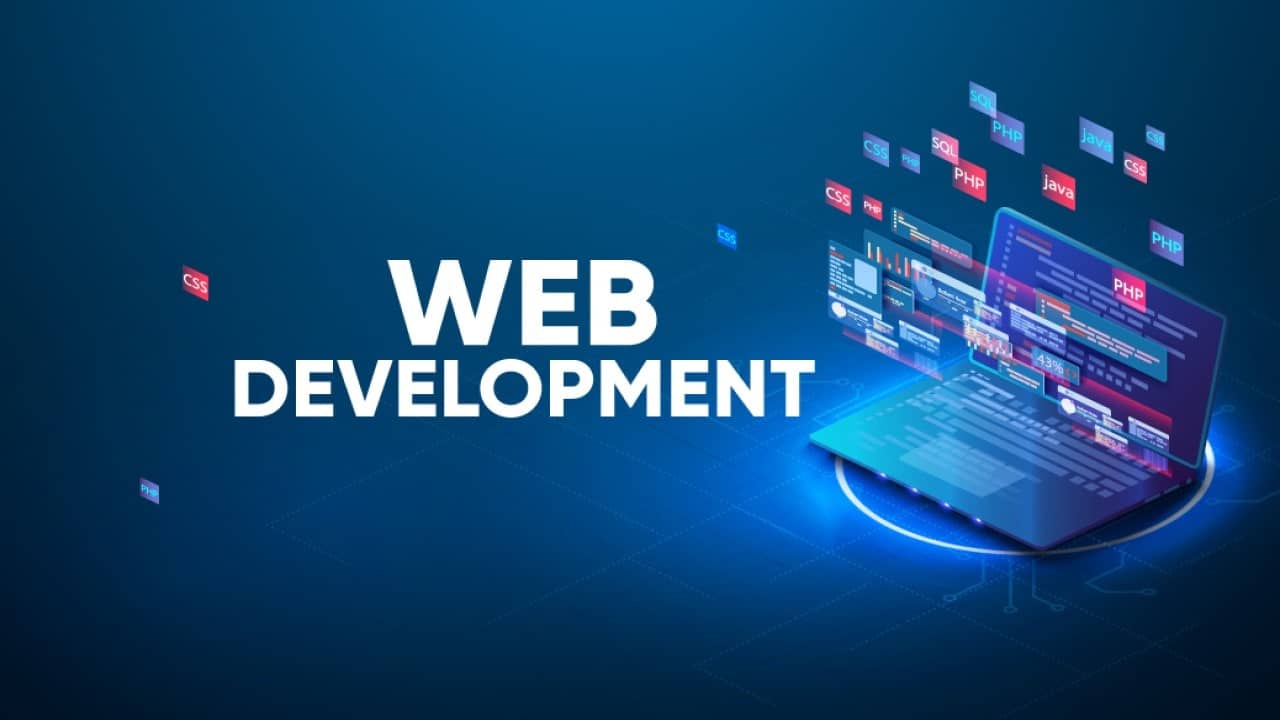High-performance business websites combine technical excellence, strategic user experience design, and conversion-focused content to deliver measurable business results. The essential elements include lightning-fast loading speeds (under 3 seconds), mobile-first responsive design, intuitive navigation, strategic calls-to-action, compelling value propositions, trust indicators, and conversion-optimized forms—all supported by robust technical infrastructure and continuous performance monitoring.
Creating a website that drives business growth requires balancing aesthetic appeal with functional efficiency. This article explores the critical components that transform ordinary business websites into high-performing digital assets that attract visitors, engage prospects, and convert customers.
Technical Performance Foundations
Website technical performance directly impacts user experience, search engine rankings, and conversion rates. The technical infrastructure forms the foundation upon which all other elements depend.
Speed Optimization Essentials
Loading speed significantly influences visitor behavior and search rankings. According to Google research, the probability of bounce increases 32% as page load time goes from 1 to 3 seconds, and 90% of visitors abandon sites that take more than 5 seconds to load.
Key speed factors and their impact include:
| Speed Element | Performance Target | Business Impact | Implementation Complexity |
|---|---|---|---|
| Page Weight | Under 2MB total | 25-30% faster loading | Medium |
| Image Compression | 70-80% reduction without quality loss | 40-50% faster loading | Low |
| Server Response Time | Under 200ms TTFB | 15-20% better user retention | Medium-High |
| Code Minification | 30-40% file size reduction | 10-15% faster rendering | Low |
| Browser Caching | 1 week+ expiration | 50-70% faster repeat visits | Low |
| Content Delivery Network | Global edge distribution | 40-60% faster global access | Medium |
Bonus Tip: Implement lazy loading for below-the-fold images and videos. This technique defers loading non-essential content until needed, reducing initial page load time by 30-40% while preserving the complete user experience.
Mobile-First Technical Structure
With mobile devices generating 54.8% of global website traffic according to Statista, mobile performance has become the primary technical consideration.
Effective mobile-first technical implementation includes:
- Responsive frameworks that adapt to any screen size
- Touch-friendly interface elements (minimum 44×44 pixel tap targets)
- Simplified navigation systems for smaller screens
- Accelerated Mobile Pages (AMP) for content-focused sections
- Progressive Web App capabilities for app-like experiences
Websites implementing true mobile-first architecture experience 15-25% higher engagement metrics and 10-20% lower bounce rates compared to retrofitted desktop designs.
User Experience Architecture
The structural organization of content and functionality determines how effectively visitors can accomplish their goals on your site.
Navigation System Design
Navigation directly impacts findability—how quickly users locate desired information. Effective navigation systems share these characteristics:
| Navigation Type | Best Used For | User Efficiency | Implementation Considerations |
|---|---|---|---|
| Hierarchical Menu | Service-based businesses | High for familiar users | Keep to 5-7 main categories |
| Search-First | Product-heavy catalogs | High for specific intent | Requires robust search functionality |
| Card-Based | Visual/portfolio businesses | Medium-High for browsing | Higher maintenance for updates |
| Mega Menu | Complex organizations | Medium for new visitors | Requires careful organization |
| Guided Flow | Single-service specialists | Very High for linear processes | Limited flexibility for exploration |
User testing consistently shows that visitors abandon websites after 3-5 unsuccessful clicks. Strategic navigation design reduces this abandonment by creating intuitive pathways to high-value content.
Content Hierarchy and Scannability
Web visitors typically scan rather than read, reviewing only 20-28% of text on a page according to Nielsen Norman Group research. Effective hierarchy enhances scannability through:
- Clear, descriptive headings and subheadings
- Concise paragraphs (3-5 sentences maximum)
- Strategic use of bullet points for key information
- Visual separation between content sections
- Consistent formatting patterns throughout the site
Eye-tracking studies show that websites with strong visual hierarchy achieve 57% better reading comprehension and 47% faster task completion.
Bonus Tip: Apply the “inverted pyramid” writing structure for critical website content. Present the most important information first, followed by supporting details, and finally background information. This approach ensures visitors capture key messages even during brief engagement.
Conversion Optimization Elements
Converting visitors into leads or customers requires strategic implementation of persuasive elements throughout the user journey.
Strategic Call-to-Action Implementation
Effective CTAs guide visitors toward business-generating actions. The placement, design, and messaging of these elements significantly impact conversion rates:
| CTA Type | Optimal Placement | Design Best Practices | Conversion Impact |
|---|---|---|---|
| Primary Action | Above fold, end of key sections | High contrast, 44px+ touch target | 25-35% of total conversions |
| Secondary Offers | Mid-content, sidebar | Complementary to main content | 15-20% of total conversions |
| Tertiary Options | Footer, related content areas | Subtle but distinct styling | 5-10% of total conversions |
| Exit Intent | Triggered on abandonment signals | Attention-grabbing but not intrusive | Recovery of 5-15% of bounces |
Research from ConversionXL shows that businesses implementing strategic CTA hierarchies experience 55-85% higher overall conversion rates compared to sites with uniform CTA styling.
Trust Element Integration
Trust signals reduce perceived risk and accelerate decision-making. The most effective trust elements include:
- Social proof (testimonials, reviews, case studies)
- Credibility indicators (certifications, awards, partnerships)
- Security assurances (SSL certificates, privacy policy, secure payment icons)
- Transparency elements (team profiles, company history, values statements)
Websites displaying trust elements prominently experience 42% higher conversion rates and 33% larger average transaction values according to CXL Institute research.
Content Strategy Implementation
Website content must balance comprehensive information with engaging presentation to drive business results.
Value Proposition Communication
Clear value propositions answer the critical visitor question: “Why should I choose you?” Effective implementation includes:
- Headline that articulates the primary benefit
- Supporting statement explaining how the benefit is delivered
- Visual reinforcement of key value points
- Benefit-focused rather than feature-focused language
- Industry-specific differentiation points
A/B testing consistently shows that websites with clearly articulated value propositions outperform generic alternatives by 80-150% in conversion rates.
Engagement Content Development
Beyond core service/product information, engagement content builds relationships with potential customers through valuable resources:
| Content Type | Business Goal | Engagement Metrics | Resource Requirements |
|---|---|---|---|
| Industry Guides | Authority building | 5-8 minute average time on page | High (research, expertise) |
| Visual Explainers | Complex concept clarification | 40-60% social sharing | Medium-High (design, simplification) |
| Interactive Tools | Lead qualification | 30-50% return visitor rate | High (development, maintenance) |
| Case Studies | Proof of capability | 15-25% progression to contact | Medium (client participation) |
| FAQ Resources | Objection handling | 20-30% conversion support | Low-Medium (customer insight) |
HubSpot research indicates that websites publishing regular engagement content generate 67% more leads per month than their non-publishing competitors.
Analytics and Optimization Infrastructure
High-performance websites continuously improve through systematic measurement and refinement.
The most valuable website metrics for business impact include:
- Conversion rate by traffic source
- User flow through critical pathways
- Drop-off points in multi-step processes
- Return visitor frequency and engagement
- Revenue or lead value by entry point
Organizations implementing structured optimization programs based on these metrics typically achieve 20-30% year-over-year improvement in website performance.
Things to Consider Before Making a Decision
Before implementing changes to your business website, evaluate these critical factors:
First, assess your specific business objectives and customer needs. High-performance elements should align with your particular goals—lead generation, e-commerce sales, information delivery, or brand building. Different objectives require different optimization priorities.
Next, consider your technical resources and maintenance capabilities. Some high-performance elements require ongoing maintenance or specialized expertise. Implement solutions your team can effectively support long-term rather than chasing trendy features that may become abandoned.
Finally, prioritize based on current performance data. Use analytics to identify the weakest points in your current website performance—whether speed issues, navigation confusion, or conversion bottlenecks. Target improvements that address your specific limitations rather than generic enhancements.
Implementation Approaches
The implementation approach significantly impacts both immediate results and long-term performance:
| Approach | Best For | Timeline | Resource Requirements |
|---|---|---|---|
| Complete Redesign | Outdated sites (3+ years old) | 3-6 months | High (design, development, content) |
| Phased Optimization | Functional but underperforming sites | 1-3 months per phase | Medium (focused improvements) |
| Continuous Improvement | Recently built sites | Ongoing | Low-Medium (regular small updates) |
| Hybrid (Critical + Continuous) | Mixed-performance sites | 1-2 months + ongoing | Medium-High initially, then lower |
According to GoodFirms research, businesses implementing the hybrid approach—addressing critical issues immediately while maintaining continuous improvement—achieve the best balance of immediate gains and sustained performance.
Topic FAQ
How important is website speed compared to visual design?
Speed takes priority over visual complexity. Research shows 47% of visitors expect pages to load in under 2 seconds, and 40% abandon sites that take over 3 seconds to load. Implement visually appealing designs that maintain fast loading times by using efficient coding practices, optimized images, and selective animation. Simplicity often outperforms complexity in both user experience and conversion metrics.
Should business websites prioritize SEO or conversion optimization?
These goals work together rather than competing. Implement SEO best practices that align with user needs and business objectives. Focus first on creating valuable, relevant content for your target audience, then optimize for search visibility. The most effective approach integrates both disciplines by identifying high-value search terms with commercial intent, creating content that serves both visitor needs and search algorithms, and designing conversion paths that feel natural rather than forced.
How frequently should business websites be updated?
Beyond regular content additions, review core website elements quarterly and implement a major assessment annually. Technology changes, customer expectations evolve, and business offerings develop—your website should reflect these changes. Minor updates (content, images, offers) should occur weekly or monthly, while major structural or design changes typically follow 2-3 year cycles, assuming regular incremental improvements between major updates.
How do we balance information completeness with simplicity?
Use progressive disclosure techniques—presenting only essential information initially, with clear pathways to deeper content for interested visitors. Structure content in logical layers, with each page focusing on a single primary topic. Implement expandable sections, tabbed interfaces, or linked detail pages for supporting information. This approach satisfies both quick-scanning visitors and those seeking comprehensive information without overwhelming either group.
Make the Right Decision
High-performance business websites balance technical excellence, user-centered design, strategic content, and conversion optimization to deliver measurable business results. The most effective implementation focuses on aligning these elements with specific business objectives rather than implementing features for their own sake.
Begin by analyzing your current performance data to identify the highest-impact improvement opportunities. Prioritize elements that directly impact your primary business goals—whether lead generation, e-commerce sales, or brand building. Implement changes methodically, measuring results to verify improvements before moving to the next priority.
Remember that website performance is not a one-time achievement but an ongoing process. The most successful business websites continuously evolve through regular assessment, targeted improvements, and adaptation to changing customer needs and technological capabilities.
Reviewer:
James Anderson has 7 years of experience in digital marketing. James reviewed this article and shared practical advice to help small businesses enhance their online presence and attract more customers.

